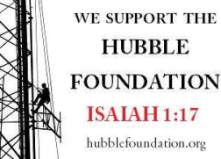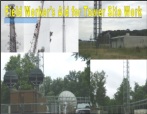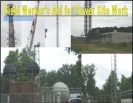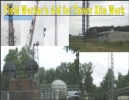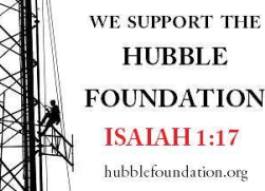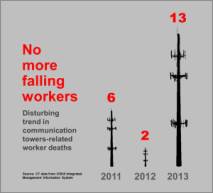Podcast: Play in new window | Download | Embed
Subscribe: Apple Podcasts | RSS
I wanted to make sure we all respond to the OSHA questions. I have been working on them for the past 3 days. I am still looking them over because this is very important to me. I really want to make sure we give OSHA a good foundation for the future of tower climber safety. I plan to upload them to the Wireless Estimator page this week. I am writing this on April 22, 2015, and plan to upload them tomorrow.
 First, I want to share them with you. This may not be the final but you can look me up on the Wireless Estimator OSHA RFI site by searching for Wade4Wireless or Wade Sarver. Go ahead, log in and look around, see what others have said, that is what I am doing. Click on the view comments to see what others have done.
First, I want to share them with you. This may not be the final but you can look me up on the Wireless Estimator OSHA RFI site by searching for Wade4Wireless or Wade Sarver. Go ahead, log in and look around, see what others have said, that is what I am doing. Click on the view comments to see what others have done.
FYI – 2015 USA OSHA Stand Down May 4th to May 15th!
Since this is so long, I have put the tower climber questions in this post. I will release a post for each section. You don’t need to answer every question, but please, make sure that your answers are going to help. You have to look at this as your contribution for change, so if you decide to be a smart ass with a stupid answer, then you don’t care. You should find a new industry to work in because we want to make this a better profession! Remember that professionals work in this profession!
help. You have to look at this as your contribution for change, so if you decide to be a smart ass with a stupid answer, then you don’t care. You should find a new industry to work in because we want to make this a better profession! Remember that professionals work in this profession!
OK, I am done preaching, here are the questions and answers.See what you can learn! Click here for more information!
Prefer to listen on YouTube?
Questions for Tower Climbers
- As a tower climber, what are the most significant hazards that you encounter on the job? What circumstances or conditions create or contribute to these hazards?
- Hazards: Falling, fatigue, injury from over exertion, stress from travel and working at heights. The climber’s job is at height and outdoors so weather is also a hazard. The climber must work in all climates causing another risk to be taken into consideration. Frostbite and heat exhaustion are all factors that cause problems when working at height.
- Circumstances: Often time the circumstances that cause problems are when the schedule is pushing the climbers to work quickly and longer hours in the air. The deadlines need to be realistic and take into account that there are delays due to delivery and weather and other customer’s schedules. This is often why inexperienced crews do much of the work because the roll outs of all the carriers happen simultaneously. Look at the auctions, all the carriers win the frequencies at the same time so they all have to deploy along the same schedules. This causes the current contractors to book up very quickly. This falls into the realm of taking short cuts. If the climbers would remain tied off 100% of the time then you would think the problem would be resolved. The schedule causes them to take shortcuts. Also, a big part of this is getting paid, low pay makes for poor quality of worker, training, and lack of PPE. When the crews don’t get paid, either by their owners or contractors, for any reason, they can’t continue safely.
- Conditions: Working at heights for prolonged periods in all environments and in odd positions while moving heavy weight cause many problems. It causes the workers to over exert themselves if they don’t have the right tools. The tight schedules given to the climbers due to heavy emphasis put on due dates and trying to make the hours bid. Often the job is bid skinny causing the hours to be unrealistic. If there is bad weather then it could cause issues with climbing or if you delay the climb then the schedule will be impacted causing the climbers to try to get done in less time by rushing, taking shortcuts, or working extremely long days, even in the dark. The stress is caused by the extensive travel and the worry of training new workers at height. It becomes tough to worry about yourself and your greenhorn.
- What steps do you take, at this time, to complete your work safely? What safety-related work practices do you think should be in place?
- Currently employed is the 100% tie off, training, and practice. That along with logging the high time and drive time of each climber.
- There should be 100% ties off rule, required training for all workers on site for tower work, tower safety, and rescue. First Aid and CPR should be standard. All drive and high time should be logged and kept on record. All practice of tower rescue should be logged and kept on record. All certifications should be required and kept on record. I think that the customer should require all the records they can. All customers should require a safety audit for all tower work to be done by independent companies. This should be the customer’s responsibility!
- What safety rules and work practices are provided to you, and who provides you with that information?
- In the safety handbook there is a list of rules, 100% tie off, notes about the drug tests, and safety practices for the worker. There is also a safety manual from Comtrain that is passed around. There is also a list of safety practices from OSHA and the insurance company about heavy lifting.
- The handbook is distributed by the foreman and HR.
- Who assigns and oversees your work? Who provides your training and checks your equipment? When at a job site, to whom would you report a potential safety issue?
- The department head or a project manager assigns and oversees the work from a high level. In the field, at a tower site, there is a foreman or a crew lead that oversees the work and maintains the schedule and safety practices. Someone from HR, the safety person, oversees the training and certifications.
- You would report all incidents to your immediate supervisor.
- Potential safety issues would be reported to the foreman or lead on site.
- What specific steps do you think employers can take to make tower work safer?
- I think that companies that do safety audits work best. They have a person come out to the sites randomly to inspect the crew and offer ways to improve safety without being a jerk. I think that practice makes perfect so by getting the crew or crews together once a month to practice rescue and safety and talk about how they do things is a big help. I believe that annual training is very important to keep everyone up to speed.
- How, and to what extent, does the design or configuration of towers, and equipment installed on towers, affect your ability to complete your work safely?
- It plays a major role. There are times you can’t figure out how to stay tied off to go to the next level. Or you have nothing safe to anchor to. Monopoles are very difficult to maintain a safe anchor. Sometimes on a monopole, or other towers staying tied off is harder because the safe points are no near. Many times there should be a safety climb on the towers and monopole but it is either broken, lose, faulty, or not installed.
What do you think of the OSHA RFI? Let me know by sending me a message and then I will send you a newsletter, eventually.
Don’t forget to complete the OSHA RFI on Wireless Estimator!
Be smart, be safe, and pay attention!
Click here for more information just for you!
 Want to be a sponsor and advertise here? Let me know!
Want to be a sponsor and advertise here? Let me know!

Listen to iTunes or Stitcher for more commentary! Podcast Download


















